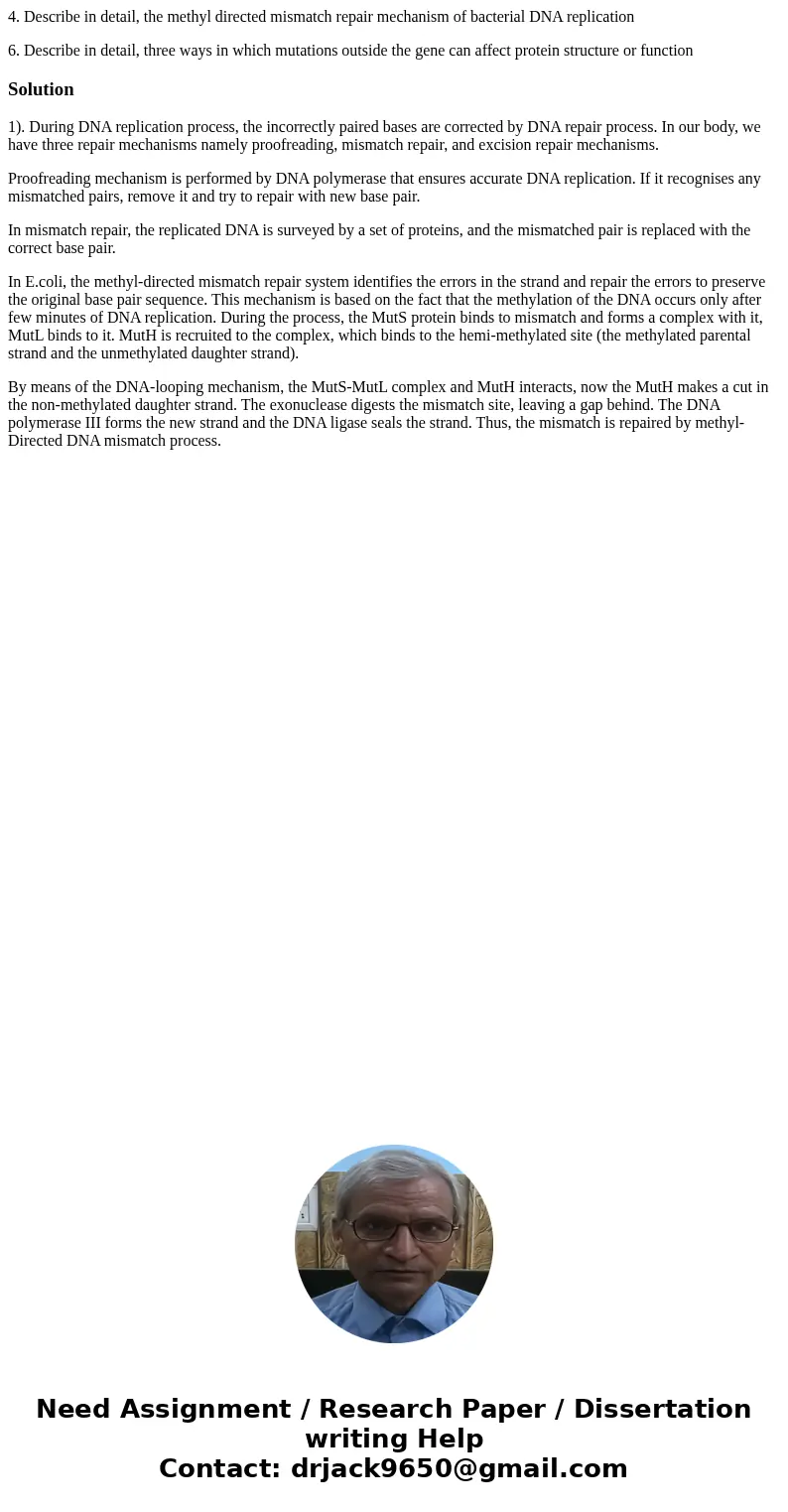4 Describe in detail the methyl directed mismatch repair mec
4. Describe in detail, the methyl directed mismatch repair mechanism of bacterial DNA replication
6. Describe in detail, three ways in which mutations outside the gene can affect protein structure or function
Solution
1). During DNA replication process, the incorrectly paired bases are corrected by DNA repair process. In our body, we have three repair mechanisms namely proofreading, mismatch repair, and excision repair mechanisms.
Proofreading mechanism is performed by DNA polymerase that ensures accurate DNA replication. If it recognises any mismatched pairs, remove it and try to repair with new base pair.
In mismatch repair, the replicated DNA is surveyed by a set of proteins, and the mismatched pair is replaced with the correct base pair.
In E.coli, the methyl-directed mismatch repair system identifies the errors in the strand and repair the errors to preserve the original base pair sequence. This mechanism is based on the fact that the methylation of the DNA occurs only after few minutes of DNA replication. During the process, the MutS protein binds to mismatch and forms a complex with it, MutL binds to it. MutH is recruited to the complex, which binds to the hemi-methylated site (the methylated parental strand and the unmethylated daughter strand).
By means of the DNA-looping mechanism, the MutS-MutL complex and MutH interacts, now the MutH makes a cut in the non-methylated daughter strand. The exonuclease digests the mismatch site, leaving a gap behind. The DNA polymerase III forms the new strand and the DNA ligase seals the strand. Thus, the mismatch is repaired by methyl-Directed DNA mismatch process.

 Homework Sourse
Homework Sourse